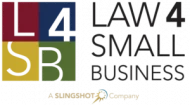One of the things I like about helping trademark clients is that I get to spend a lot of time educating them on how the law works. This is one of the advantages of hiring a law firm to help you with your trademark–unlike a document preparation company, a lawyer can actually advise you as to the law. One of the more important issues in trademark law that I discuss with clients is “likelihood of confusion.” This, and Class Codes, represents the more confusing aspects of trademark law and consequently, generate the most questions for us.
Likelihood of confusion is one of the key concepts in trademark law. The USPTO will only allow registration of a mark if it concludes it is not likely to be confused with another mark. Similarly, a suit for trademark infringement can only succeed if there is a likelihood of confusion between the plaintiff’s mark and the defendant’s mark. Whether there is a likelihood of confusion is highly fact-dependent; nevertheless, there is no shortage of law attempting to explain the issue.
Likelihood of Confusion at the Patent and Trademark Office
About 70% of trademark applications are initially rejected. Many of these rejections are easily fixed– for example, failure to identify how color is used in a design mark, or to disclaim a term. Some are not. Perhaps the most difficult rejection to overcome is a rejection due to likelihood of confusion with an existing registered mark (or prior filed application).
A trademark examiner will reject an application if they conclude that the applicant’s mark, as used on or in connection with the specified goods or services, so resembles a registered mark as to be likely to cause confusion. The examining attorney must conduct a search of USPTO records to determine whether the applicant’s mark so resembles any registered mark(s) as to be likely to cause confusion or mistake when used on or in connection with the goods or services identified in the application. The examining attorney also searches pending applications for conflicting marks with earlier effective filing dates (which is why we recommend filing as early as possible).
The “likelihood of confusion” question asks not whether people will confuse the marks, but whether the marks will confuse people into believing that the goods they identify come from the same source. Although the courts have cautioned that there is no litmus test for determining whether a likelihood of confusion exists, they have nevertheless set forth a list of thirteen non-exclusive factors to weigh in making the determination. Sound confusing? It can be. But two factors tend to get the most discussion: similarity of the marks, and similarity of the goods and services.
Similarity of the Marks
The first, and often the most important, factor is the similarity or dissimilarity of the marks in their entireties as to appearance, sound, connotation, and commercial impression. Slight changes in marks are unlikely to be enough to avoid likelihood of confusion. The marks must convey different impressions to a reasonable consumer. Similarity of the marks in one respect – sight, sound, or meaning – will not automatically result in a determination that confusion is likely even if the goods are identical or closely related; rather, taking into account all of the relevant facts of a particular case, similarity as to one factor alone may be sufficient to support a holding that the marks are confusingly similar. This is a difficult call to make, and will vary from one person to the next, and even from one examiner to the next.
Similarity of the Goods and Services
The second important factor to consider is the similarity or dissimilarity and nature of the goods or services claimed by the marks. The more similar the marks at issue, the less similar the goods or services need to be to support a finding of likelihood of confusion. Even so, identical marks can coexist so long as they are related to sufficiently different goods or services. For example, “DELTA” is registered for different companies for air travel services, plumbing fixtures, and metal detectors (among other things). Broader descriptions of goods and services in an application will provide more protection to the applicant if granted, but are at greater risk for rejection under this factor. As with similarity of the marks, there are no bright line rules to help applicants. An experienced trademark attorney can help you prepare an application with the best chances of success, but for close cases it is impossible to predict whether an examiner will find a likelihood of confusion between any two marks.
Other Factors
Of course, there are eleven other factors that the PTO can consider, in addition to any other evidence that may be relevant to the ultimate question of whether the two marks are likely to be confused. A thorough discussion of all of the factors is beyond the scope of this post. Having an attorney assist you with your trademark application will help you to identify any problems before you file your application.
Likelihood of Confusion in Litigation
Trademark applicants tend to focus on whether an examiner will find likelihood of confusion with an existing registered mark, because that can determine whether their application will be granted. But the question is at least as important when it comes to infringement. That the PTO has registered your mark does not mean that your mark does not infringe on some other mark, but only that the PTO did not see any existing federal registrations that it believed might be infringed.
Not everyone will agree with the USPTO. To return to the “DELTA” example, the USPTO granted Registration 4019505 for the word “DELTA” in connection with mobile phone cases. It did not believe there was a likelihood of confusion between any of the many existing identical DELTA marks for different goods. At first glance, these goods seem totally different than Registration 3749413, which protects “DELTA” for proximity-RFID cards, tags and badges. But the PTO may not know that the second registration belongs to a company that produces a full line of mobile phone cases with embedded RFID badges. That company might have preexisting common law rights, or might simply believe that its goods and services are close enough that it can prevent the first company from using “DELTA” on mobile phone cases. The first company might disagree, but that disagreement ultimately must play out in the courts.
What Does This Mean for Your Business?
Likelihood of confusion is always important. Whether you have a registered mark or not, likelihood of confusion determines whether you are infringing someone else’s trademark. It also determines whether the USPTO will allow you register your mark. It is worth thinking about even before you choose a business or product name, which is why we recommend a trademark search as part of our corporate formation services. It is also why we recommend filing as early as possible, since hundreds of new (and potentially confusingly similar) applications are filed every day.
It is not always possible to avoid using a mark in a way someone believes infringement. However, a little diligence early on can reduce the likelihood that you will run in to problems later. Legal advice is an important piece of that protection. If you would like help in identifying and reducing your risk of infringement, or protecting against others using your marks, contact one of our trademark attorneys today.
Law 4 Small Business, P.C. (L4SB). A little law now can save a lot later.

